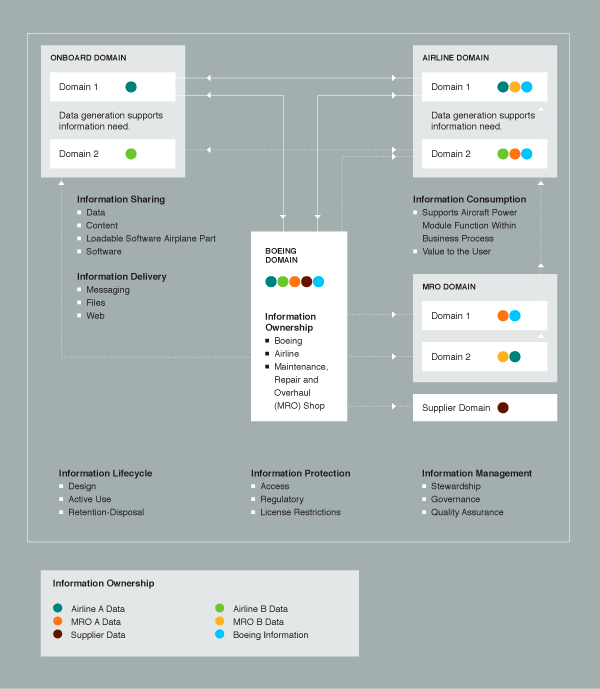
E-ENABLED SYSTEM INTEGRATION CAPABILITIES
While e-Enabling offers airlines many benefits, it also presents challenges in terms of integrating the technology into existing operations.
The e-Enabled environment includes diverse system types, information sources, data types, and different owners. The data originates with different systems within the airline’s operational areas, and it is shared within the airline and with airline partners, suppliers, and Boeing. The diversity in data types and origins creates challenges for integration, protection, and lifecycle management (see fig. 2). Figure 2 represents a conceptual depiction of information origination and utilization within the e-Enabled information architecture.
Figure 2: Overview of e-Enabled information architecture
One of the key challenges in an e-Enabled environment is integrating and managing a variety of information from a number of diverse sources.

Airplane information originates with Boeing and the suppliers to Boeing. The Boeing data domain is established as the baseline data set using the e-Enabled information architecture. This baseline includes data from the supplier data domain and design/manufacturing data from the Boeing data domain. As the airplane enters service, the airline is provided this baseline data set, which is included in the airline customer data domain. The airplane onboard data domain collects airplane operational data for real-time processing and analysis, and it is transmitted to the customer data domain for operational analysis and planning. The maintenance, repair, and overhaul (MRO) shop data domain includes the maintenance planning data and a record of the maintenance work performed. The MRO data is provided to the airlines to be included in the airline data domain. The e-Enabled information architecture is designed to include data from all data domains.
The information lifecycle facilitates the management of data from airplane design, through the airplane’s operational life to final disposal of the airplane. Information protection ensures that proper information access controls are defined, regulatory requirements for data retention are in place, and license restrictions are being followed. Information management provides the guidelines for data stewardship, governance, and quality assurance.

